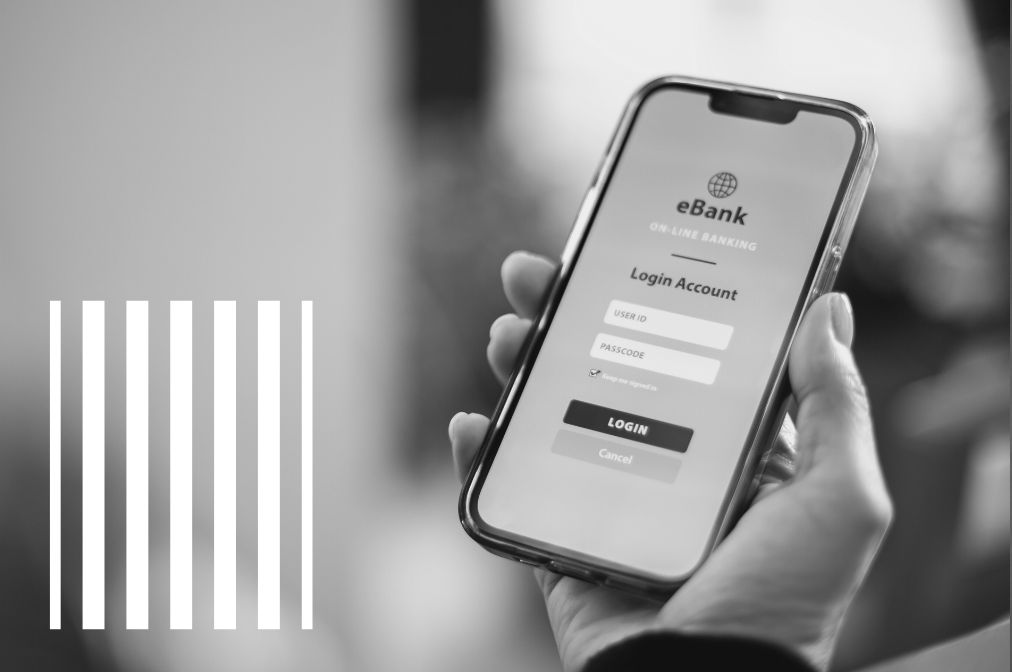Mobile banking has grown from convenience to necessity, with billions now managing money through smartphones and apps, rather than branches or desktops.
Fueled by rising smartphone adoption, real-time payment networks, and seamless app-based services, the mobile banking landscape is growing faster than ever and transforming how individuals and businesses handle finances.
This article presents the latest mobile banking statistics for 2026, tracking user adoption, regional penetration, market revenue, and emerging trends to show how mobile is now the frontline of global banking.
Data Sources and Methodology
This article compiles verified studies to provide a comprehensive overview of mobile banking. Our research process includes:
Data Collection:
- Primary sources: Industry surveys, government databases
- Secondary sources: Academic publications, reputable industry reports
- Time frame: Data collected spans from 2021 research to 2030 prediction
Key Data Providers:
Analysis Approach:
- Cross-referencing multiple sources to ensure accuracy
- Prioritizing the most recent data available
- Applying relevant analysis techniques, e.g., trend analysis, comparative analysis
Limitations:
- Market dynamics in online trading can shift rapidly; consider the publication date of this article.
We strive for accuracy and transparency in our reporting. However, some data points may have changed since publication.
Key Takeaway
- 2.17 billion people used mobile banking by 2025, marking a 35% global increase since 2020.
- Mobile banking penetration in North America reached 61%, reflecting steady adoption across major markets.
- Europe achieved 76% usage, with countries like Denmark, Norway, and Sweden surpassing 87% adoption.
- Global mobile banking revenue hit USD 1.92 trillion in 2025, up 28% year over year.
- Asia-Pacific generated USD 740 billion in mobile banking revenue, leading all regions.
- Europe’s mobile banking market grew to USD 445 billion, with the UK, Germany, and France driving most of the activity.
- Latin America recorded 29% annual growth, reaching USD 172 billion in 2025.
- Africa’s digital banking revenue climbed by USD 58 billion, with mobile-first services fueling a 43% increase in adoption.
Overview of Mobile Banking
Mobile banking emerged in the early 2000s, driven by the rapid growth of mobile devices and the increasing demand for convenient financial services.
It refers to using a mobile device like a smartphone or tablet to conduct banking transactions and access financial services remotely.
The introduction of mobile banking applications (apps) in the late 2000s marked a key milestone.
The development of smartphones running iOS and Android platforms enabled the creation of more sophisticated mobile banking apps, offering enhanced transactional capabilities and user-friendly interfaces.
Today, the mobile banking sector is characterized by seamless user experiences, enhanced security features, and integration with other financial technologies, such as contactless payments and digital wallets.
Major players include traditional banks with mobile offerings, neobanks like Revolut and N26, and tech giants entering the financial space.
Factors such as improved cybersecurity, artificial intelligence, and the rise of open banking continue to shape its trajectory.
With over 4.2 billion mobile banking users worldwide by 2026 and projections suggesting this number could reach 2 billion by 2030, Juniper Research mobile banking plays a crucial role in the broader digital transformation of financial services.
It has become a key area of focus for banks, fintech companies, regulators, and cybersecurity experts as they work to balance innovation with security and accessibility.
Key Statistics
- The global mobile banking market was valued at $715.3 million in 2018 and is expected to reach $1,824.7 million by 2026, registering a CAGR of 12.2% from 2019 to 2026. Valuates
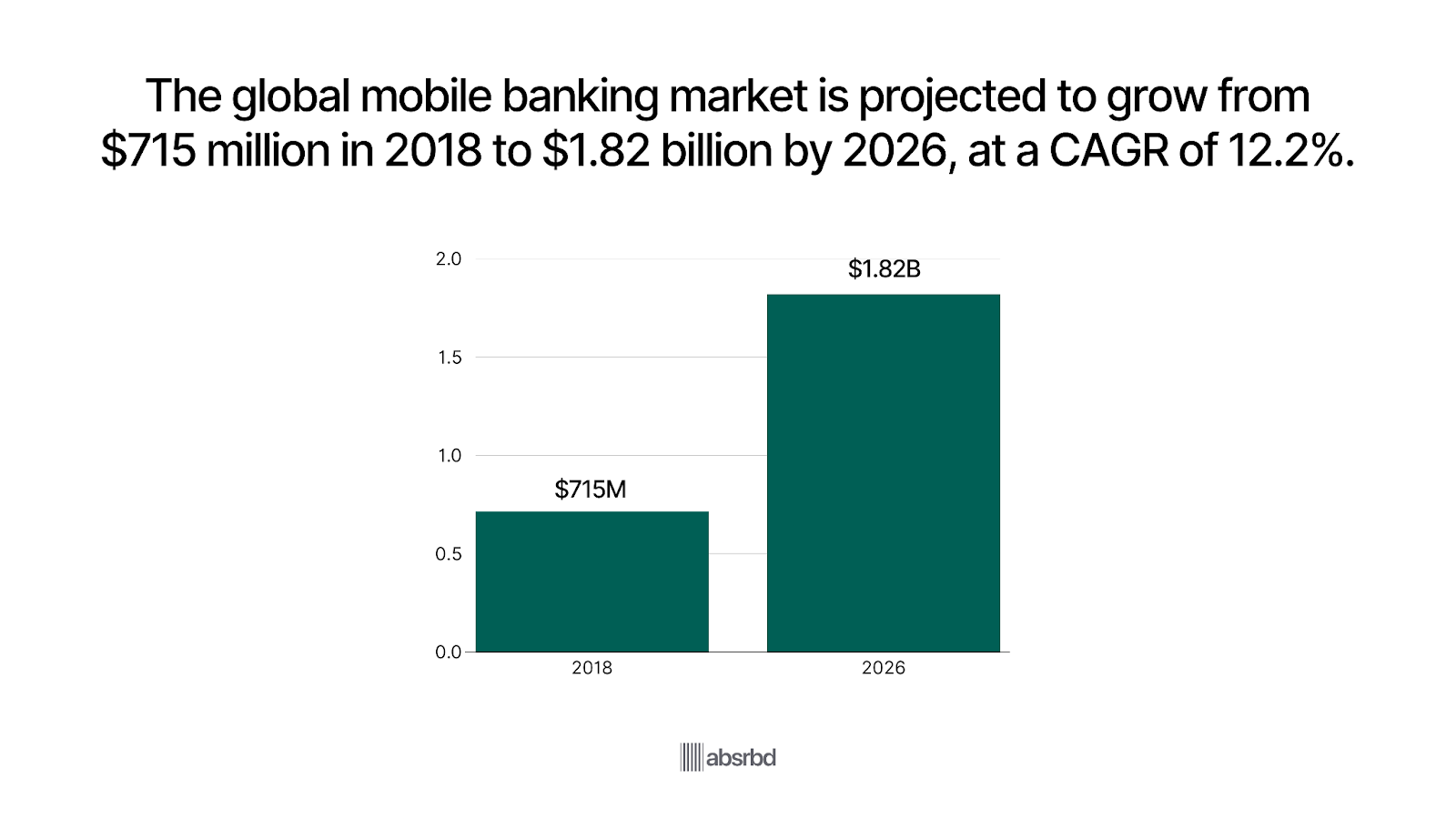
- By the end of 2025, 2.17 billion people globally used mobile banking, about a 35% increase since 2020. SQ Magazine
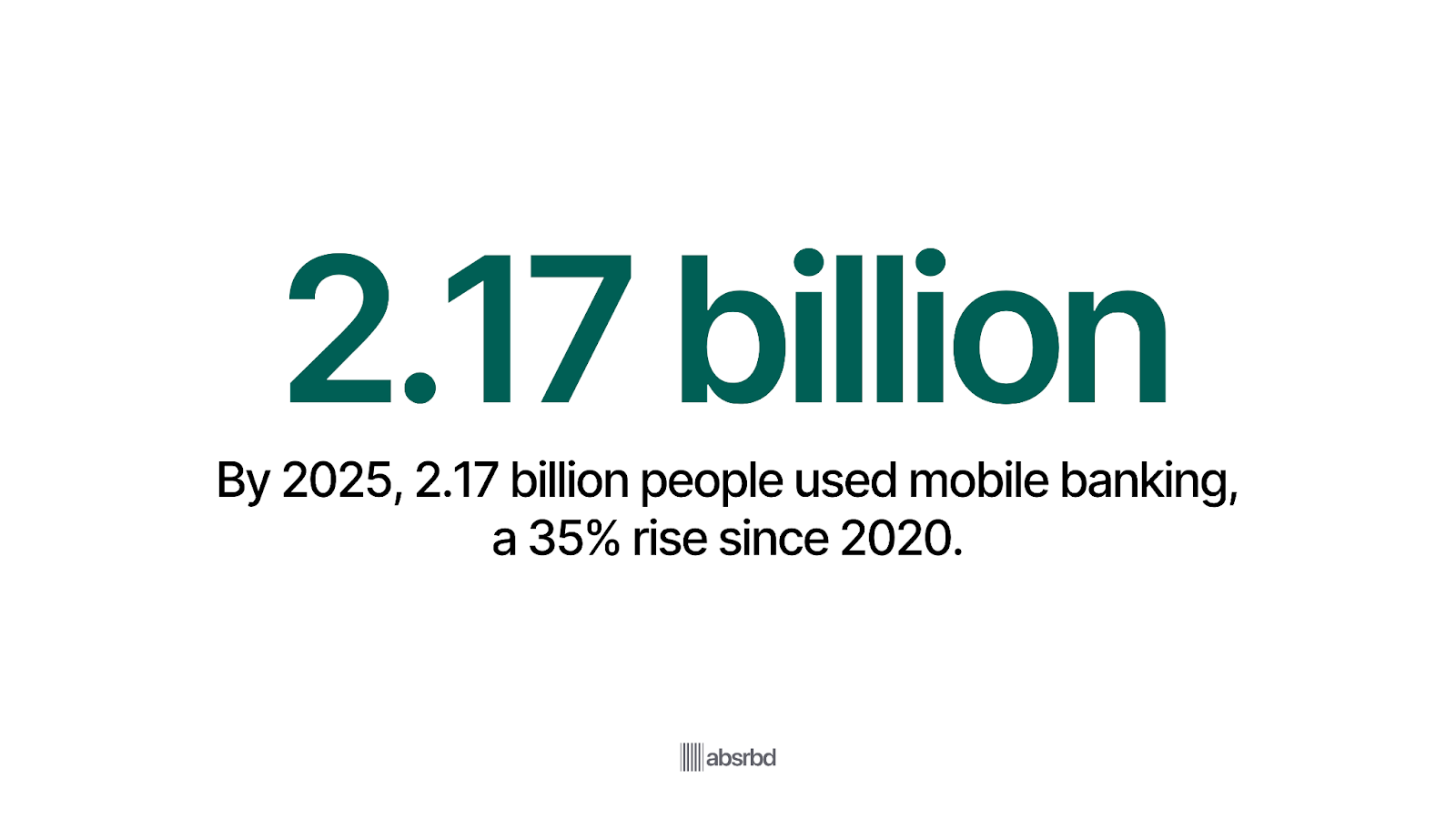
- In North America, mobile banking penetration reached 61% in 2025 (up from 58% in 2023). SQ Magazine
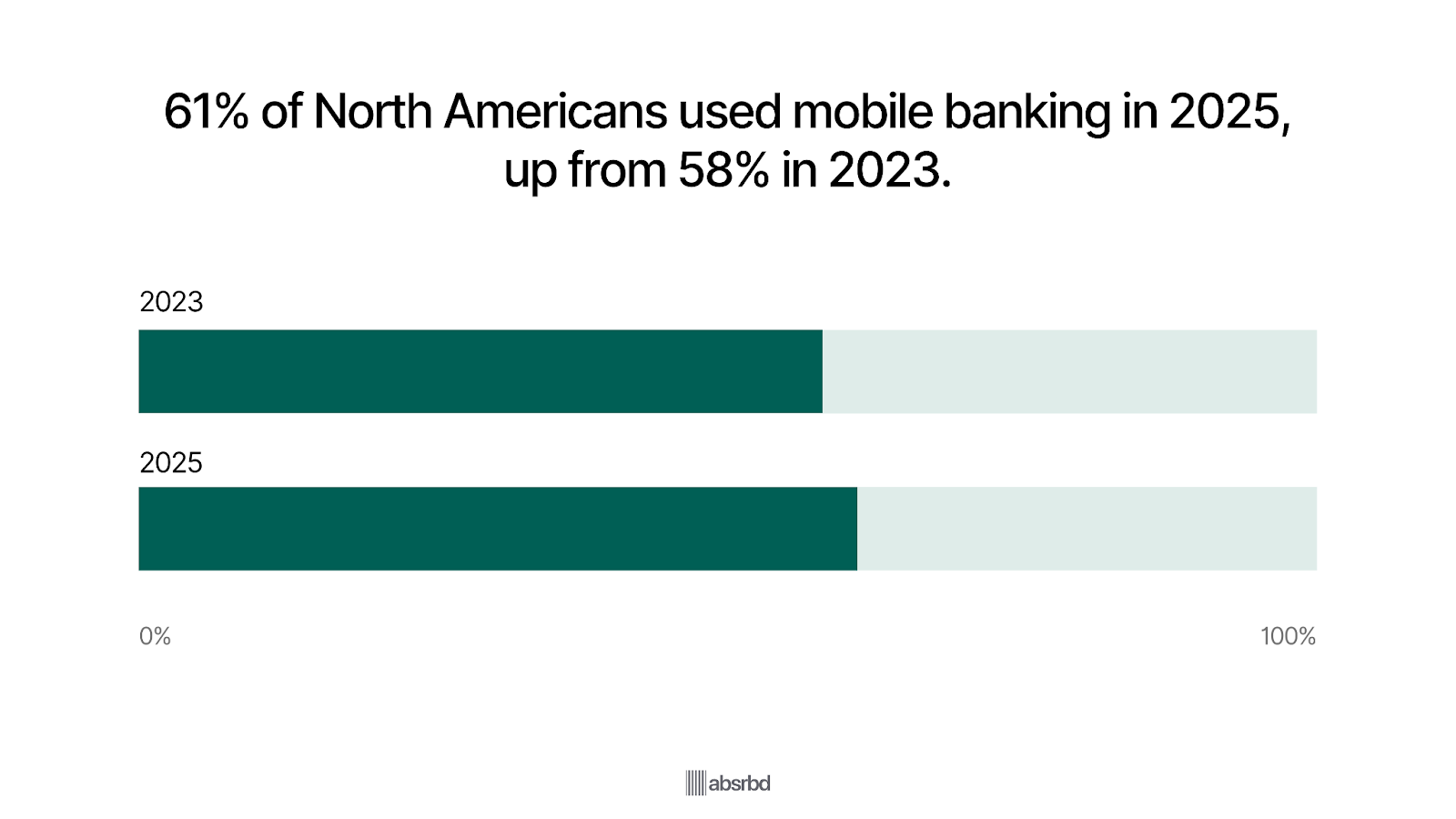
- In Europe, mobile banking use was about 76% in 2025, with top markets such as Denmark, Norway, and Sweden exceeding 87% adoption. SQ Magazine
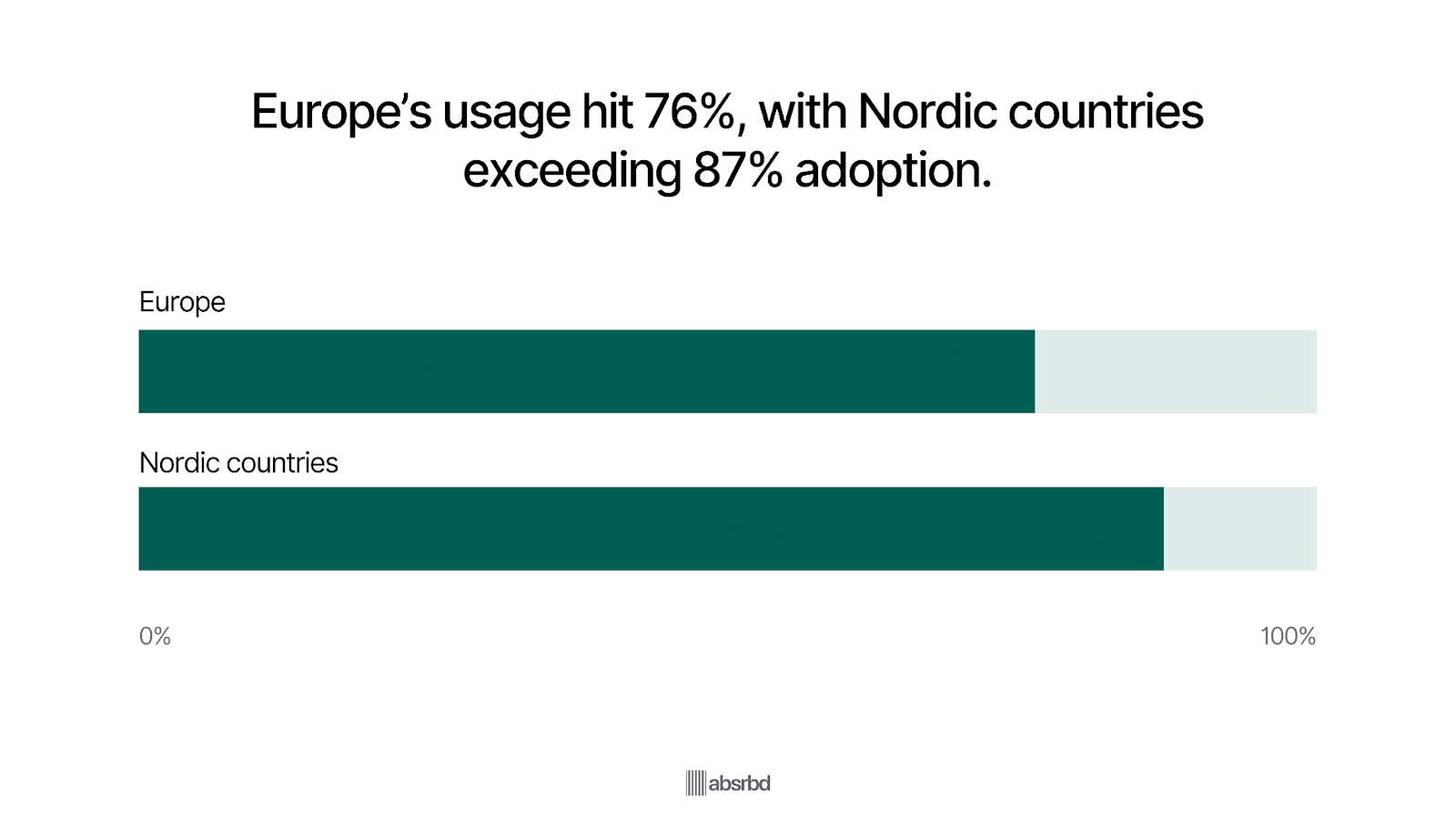
- The global mobile banking market generated about USD 1.92 trillion in revenue in 2025, a rise of 28% year over year. CoinLaw
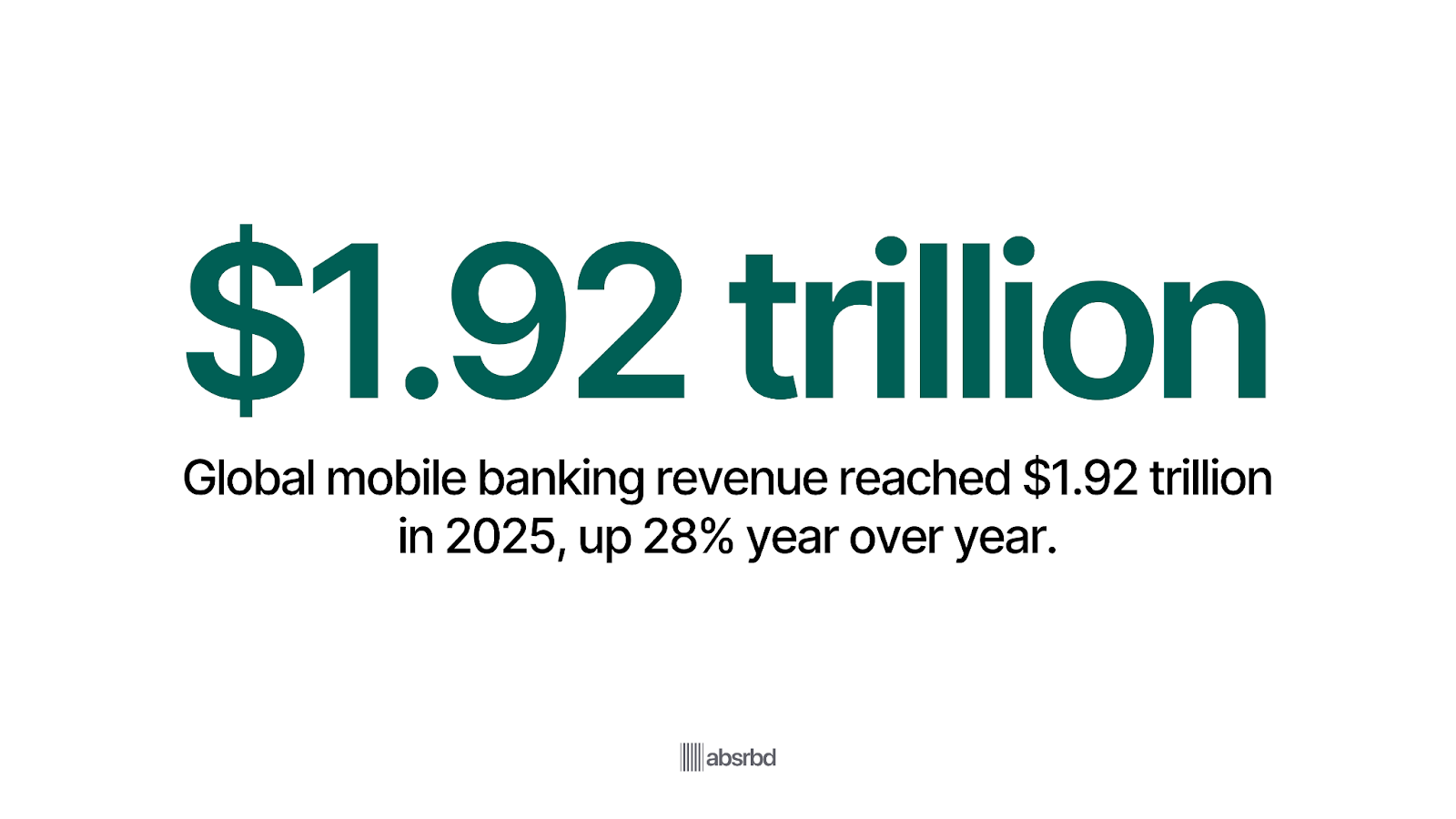
- The Asia-Pacific mobile banking market alone surpassed USD 740 billion in revenue in 2025. CoinLaw

- Europe’s mobile banking revenue in 2025 rose to USD 445 billion, with Germany, UK, and France driving over 65% of that regional volume. CoinLaw
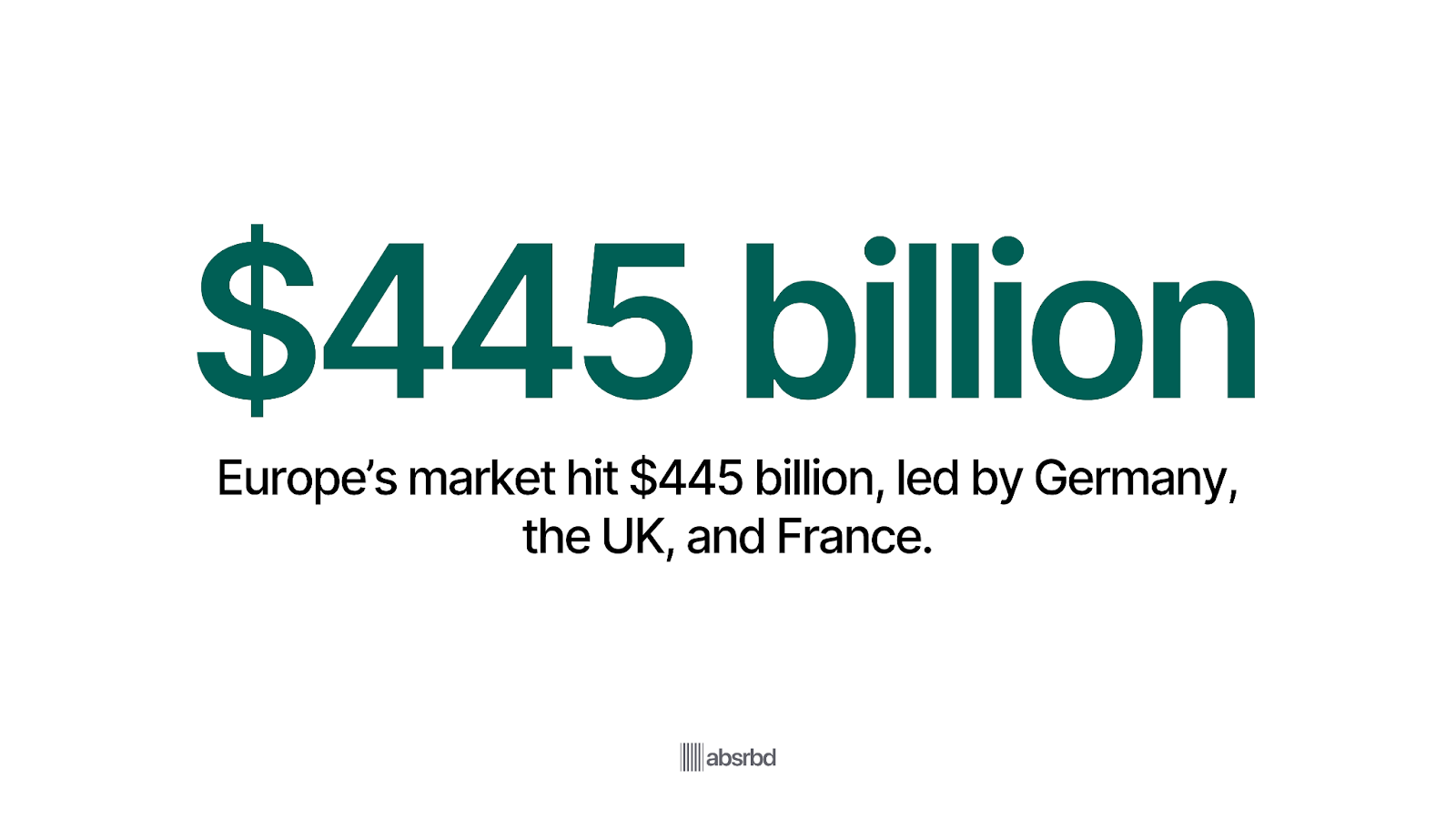
- Latin America saw 29% year-on-year growth, with mobile banking revenue reaching USD 172 billion in 2025. CoinLaw
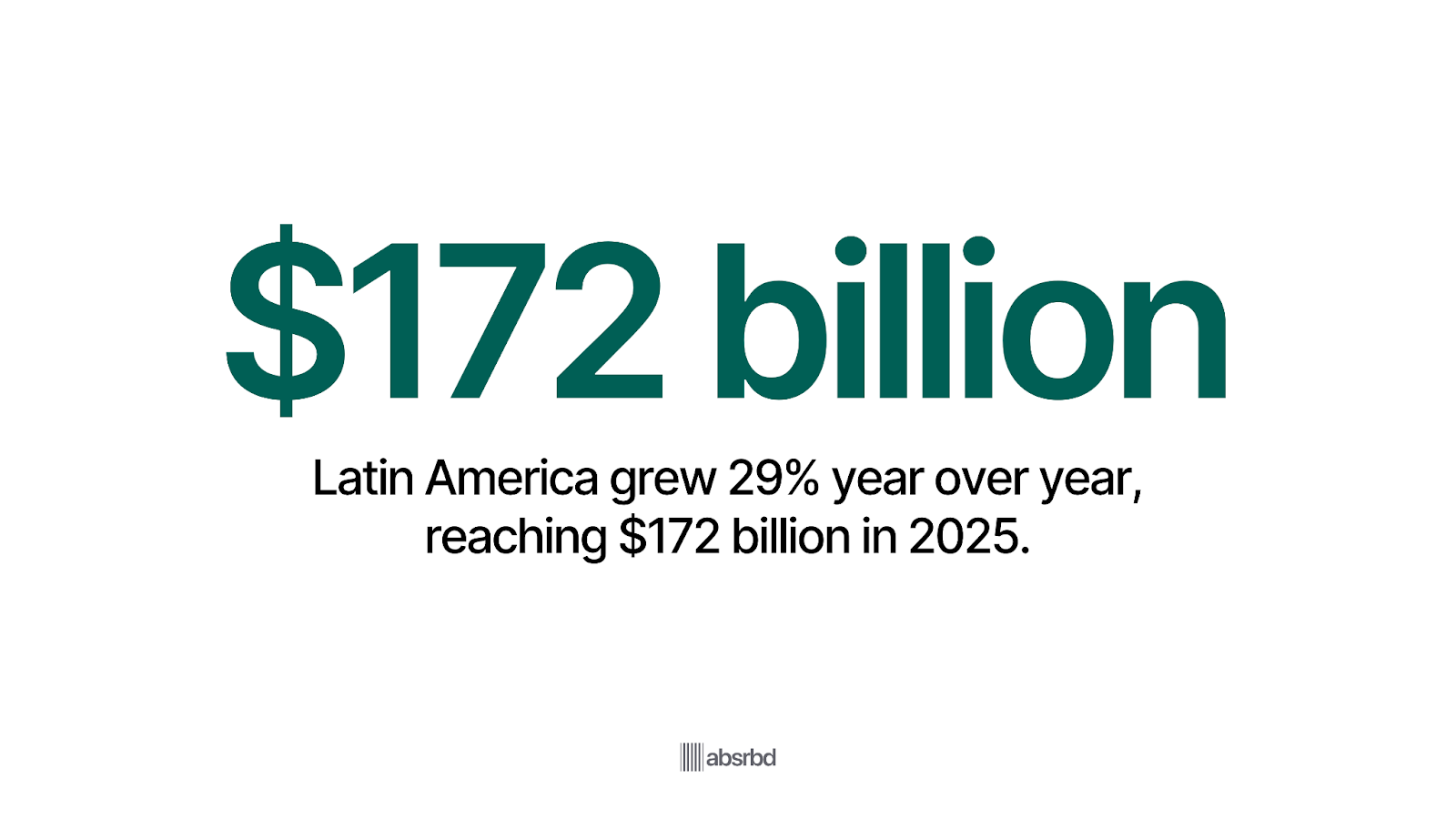
- Digital banking penetration in Africa rose by 43% in 2025, adding an estimated USD 58 billion in new annual revenue. CoinLaw
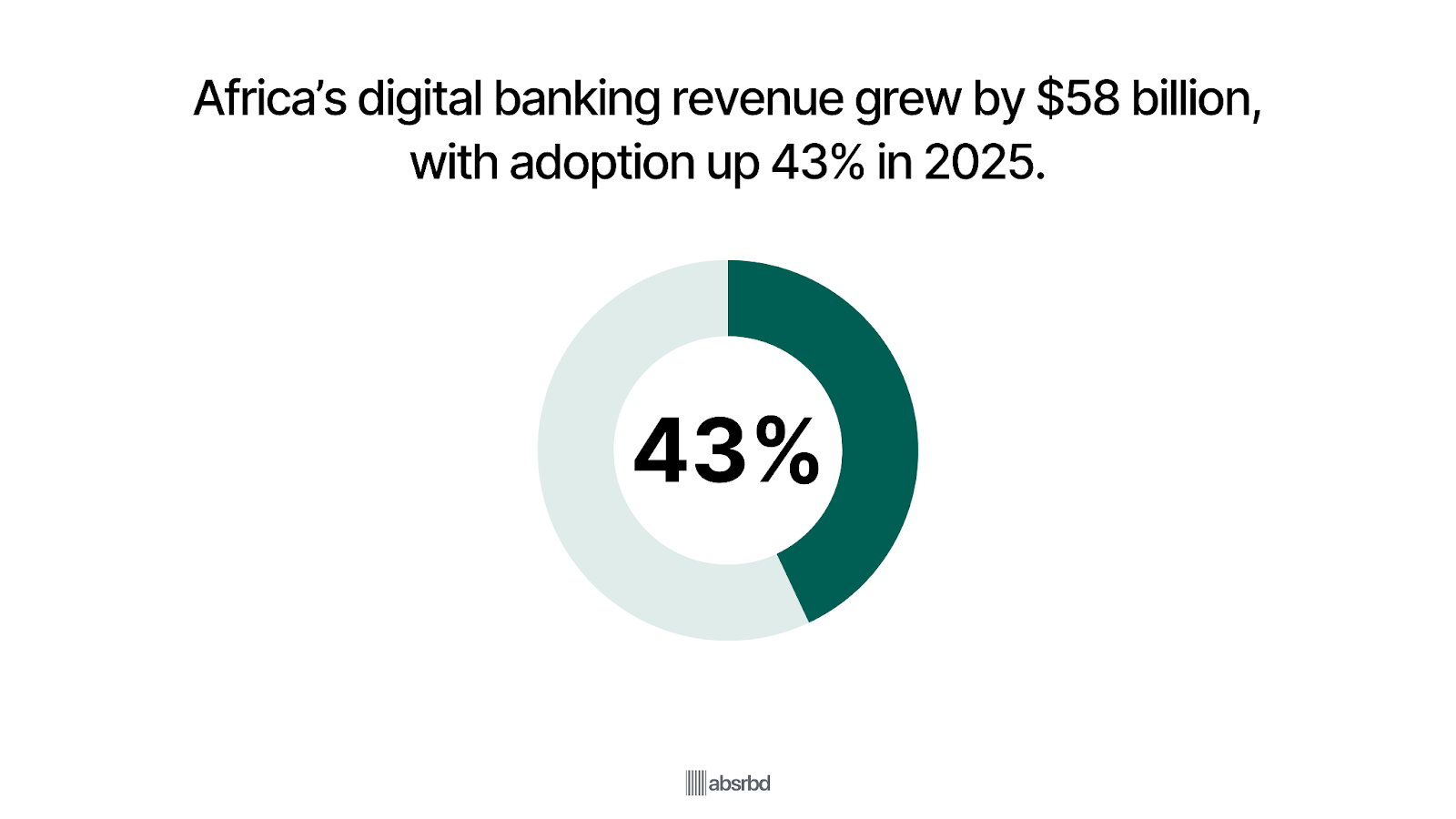
- Globally, 86% of adults in low- and middle-income countries now own a mobile phone; about 42% made digital merchant payments in 2024, up from 35% in 2021. Worldbank

- In low- and middle-income countries, 42% of adults made an in-store or online digital merchant payment in 2024, up from 35% in 2021. Worldbank

- Asia-Pacific led with 38% of the total mobile banking market size in 2024, driven by high smartphone adoption and large populations. Growth Market Reports
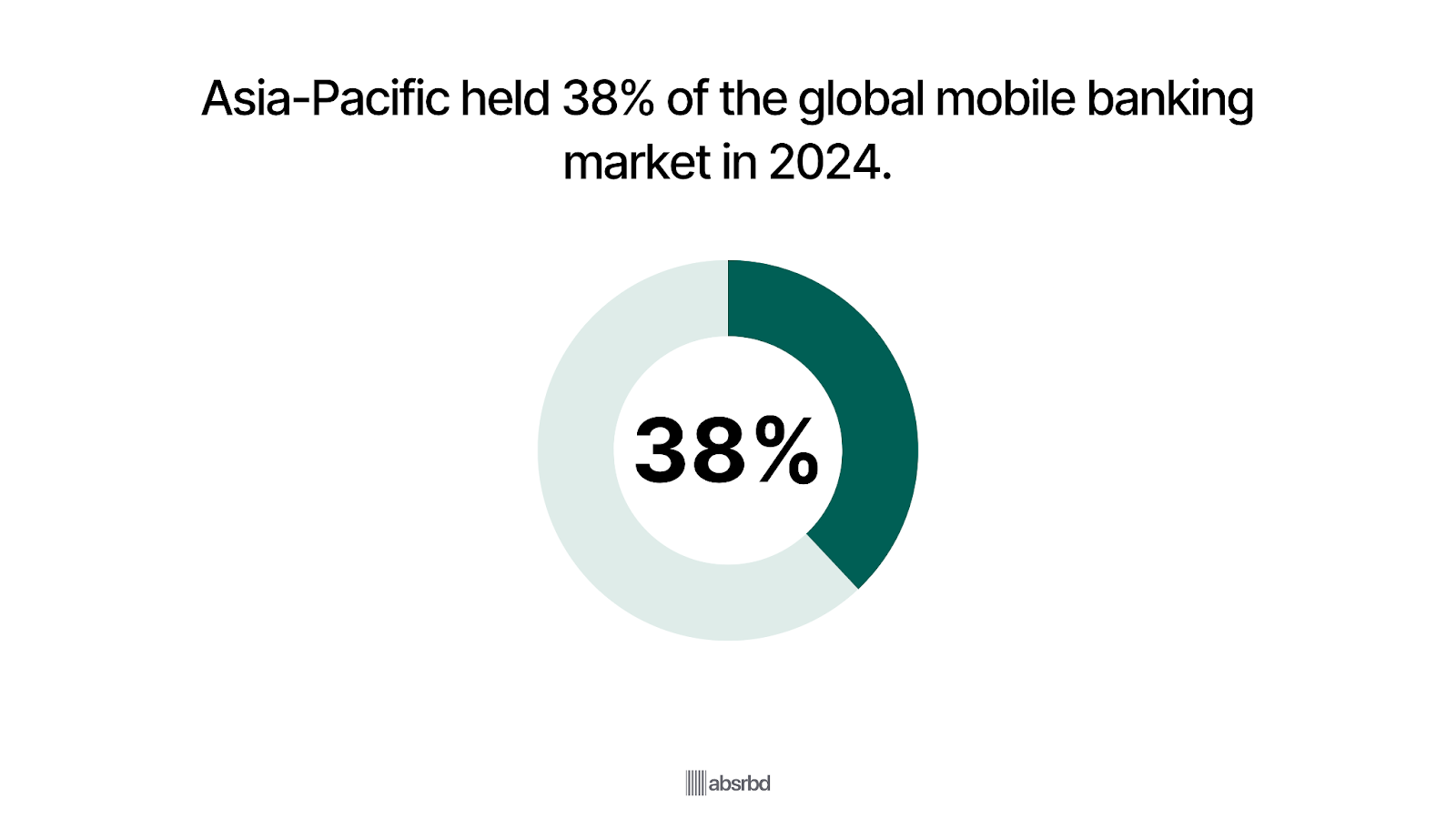
- The mobile banking application market was USD 23.60 billion in 2024 and grew to USD 26.27 billion in 2025, with a projected rise to nearly USD 69.0 billion by 2034. Market Research Future
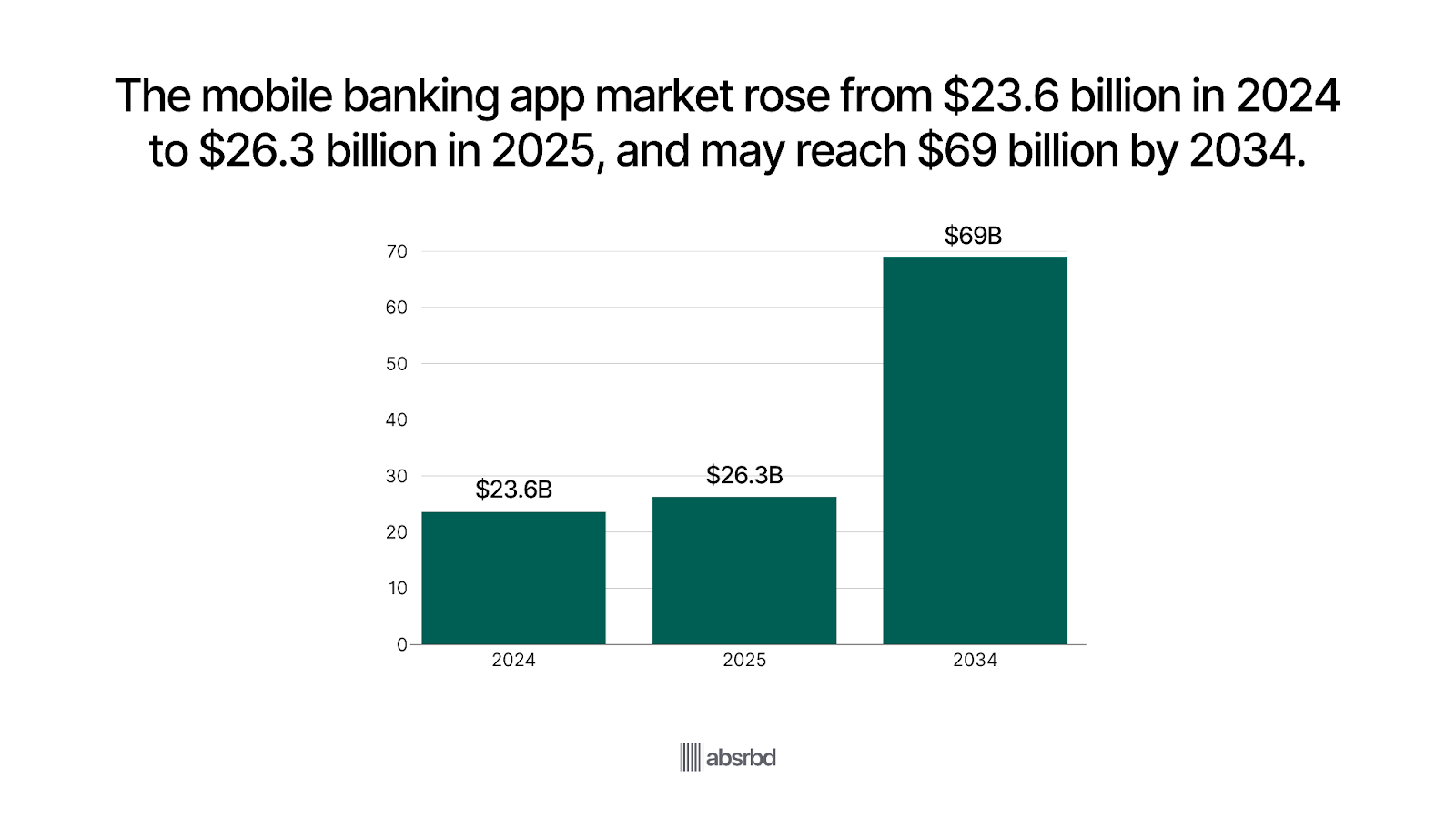
- In 2025, 72% of U.S. adults report using mobile banking apps, up from 65% in 2022. CoinLaw

- There were 860 million mobile banking users in China in 2025. SQ Magazine

- Globally, about 66% of the population now has access to mobile banking (2025). CoinLaw
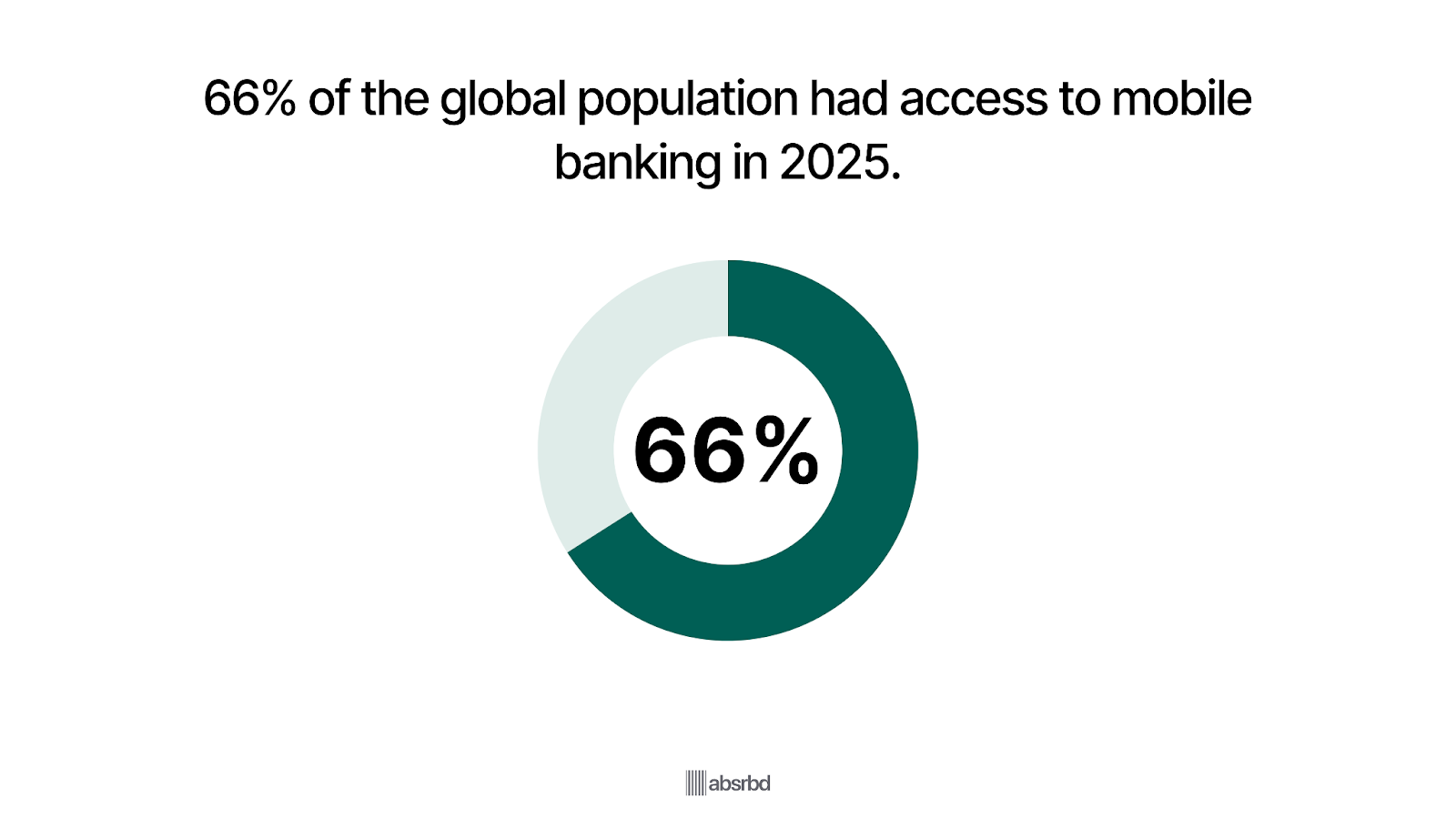
- Mobile banking penetration in Europe reached 76% in 2025, with countries including Norway, Denmark, and Sweden exceeding 87%. SQ Magazine
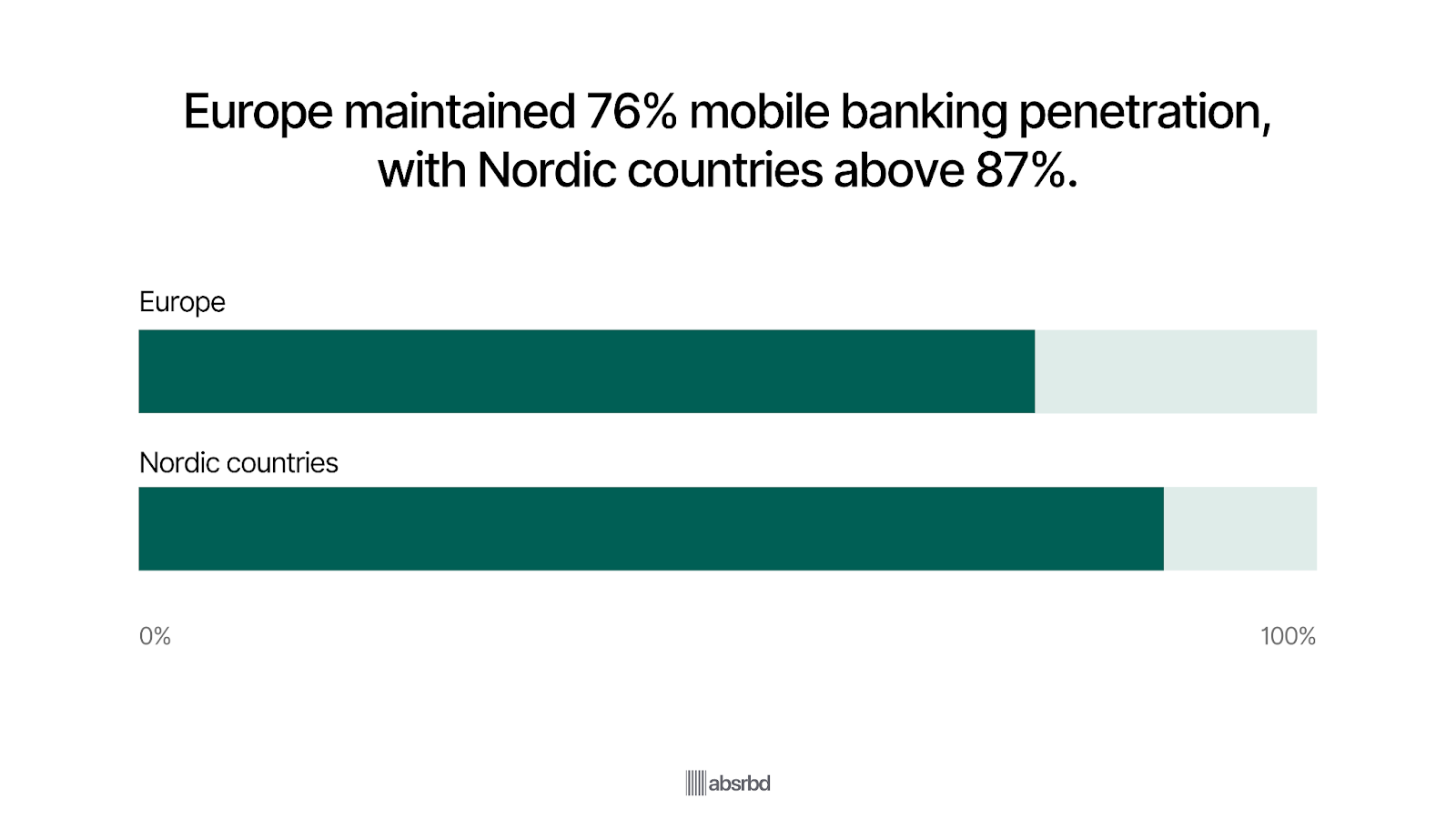
Major Trends
Mobile banking's popularity is evident, with 75% of smartphone users installing at least one financial app. (Nimble App Genies)
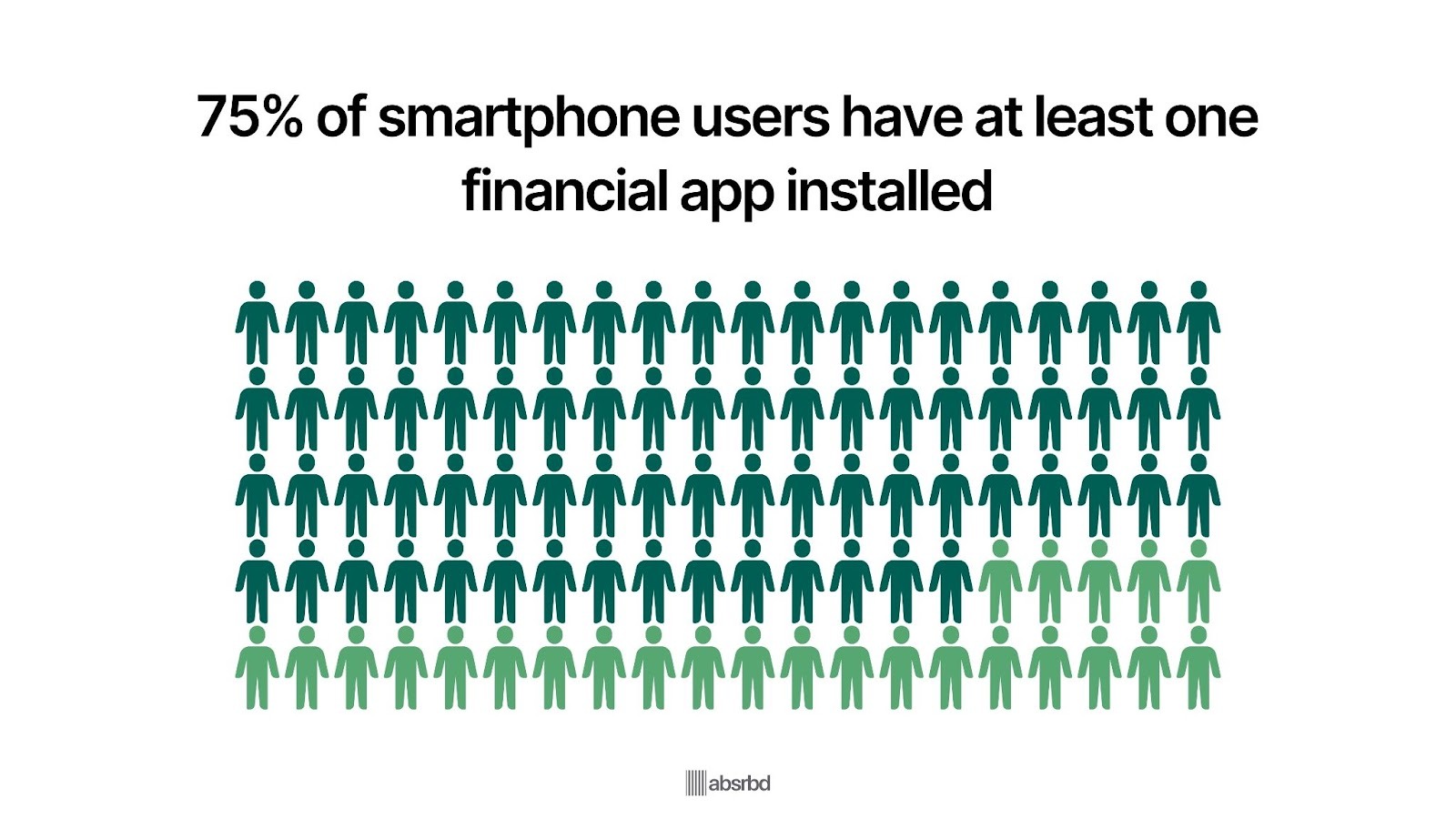
The convenience and accessibility of mobile banking have led to high adoption rates among consumers of all ages.
In the US, over 75% of smartphone users have at least one financial app installed, and 88% of all banking transactions will be conducted via mobile devices by the end of 2022. (Nimble App Genies)
This trend reflects a fundamental shift in consumer behavior towards digital financial management, driven by the need for instant access to banking services.
For example, during the COVID-19 pandemic, mobile banking app investment surged by 88% (Now Secure), highlighting the urgent demand for contactless banking solutions.
Biometrics & Multi-Factor Authentication Become Standard
By 2025, over 60% of financial institutions are expected to use biometric authentication (fingerprint, face, voice) as primary login methods. Rootstack
This surge is driven by rising fraud risk and user demand for seamless but secure access.
Banks are increasingly combining biometrics with MFA and behavioral analytics to strengthen security without adding friction.
60% of German Users Prefer Comprehensive Banking Apps (Tapix)
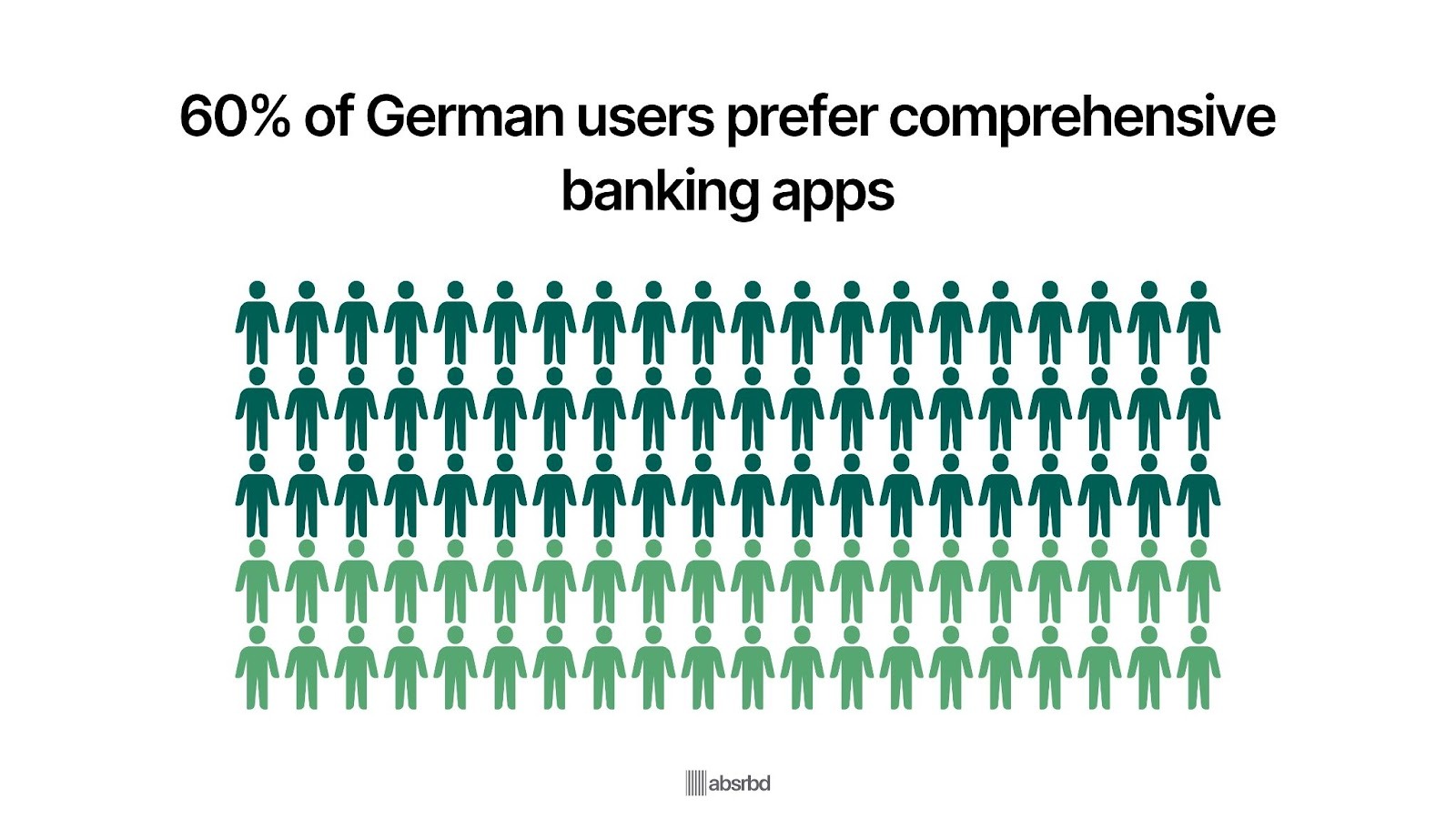
Today's mobile banking applications offer a wide range of functionalities beyond basic account management, with 60% of German users prefer apps that provide comprehensive services. (Tapix)
Users can now apply for loans, invest in stocks, and access AI-driven financial advice directly from their mobile devices.
This trend is notable because it reflects the demand for all-in-one banking solutions that enhance user experience.
Comprehensive apps allow users to manage their finances more effectively, increasing customer satisfaction.
For instance, many banks integrate budgeting tools and investment tracking features into their apps, enabling users to oversee their entire financial portfolio from one platform.
63% of Users Prefer Customized Experiences (Info Pulse)
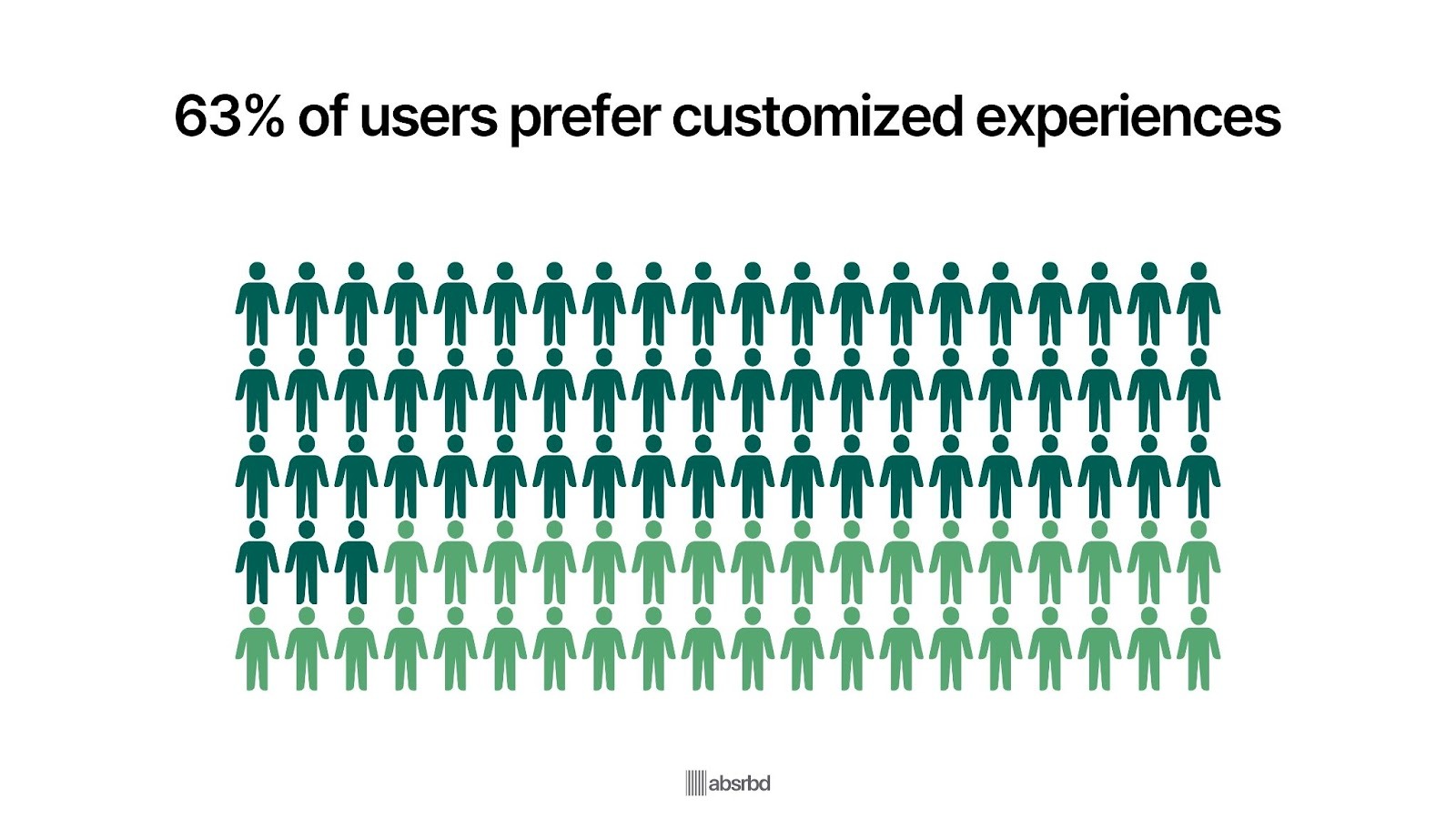
Data analytics in mobile banking transforms how banks interact with customers, with 63% of users prefer personalized banking experiences. (Info Pulse)
Banks leverage customer data to tailor services, enhancing user engagement and satisfaction.
This trend is crucial as it allows banks to provide relevant and timely financial advice, fostering customer loyalty.
Personalized services can improve users' financial outcomes, making banking more effective.
For instance, banks use AI-driven analytics to offer customized budgeting tools that help users manage their finances based on their unique spending patterns.
30% of US Users Utilizing Voice Commands (The Financial Brand)
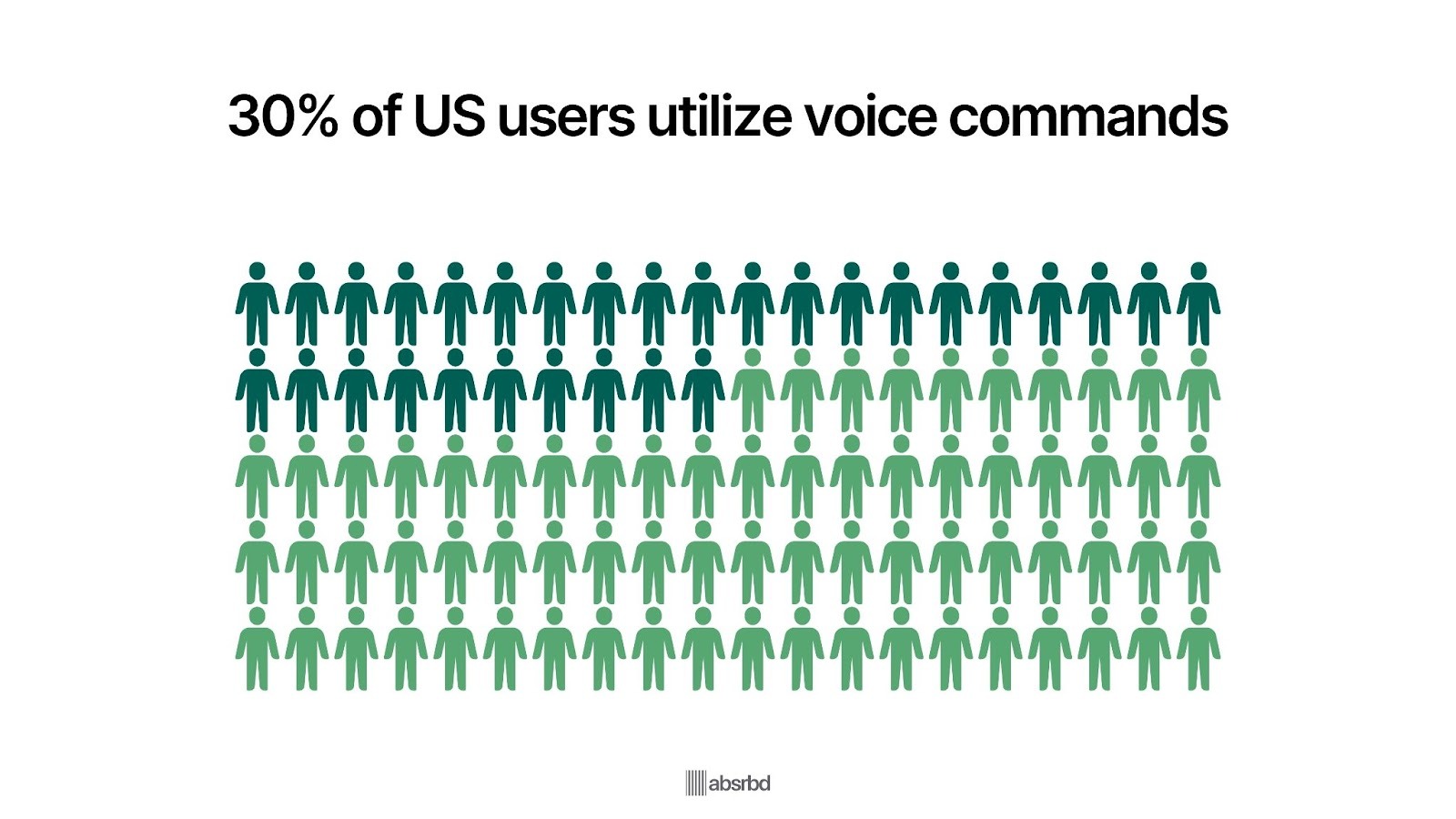
As voice-assisted devices become more prevalent, mobile banking increasingly incorporates voice commands, with 30% of users now utilizing this feature. Voice-activated banking allows customers to perform tasks hands-free, enhancing convenience.
This trend is notable as it caters to the growing demand for user-friendly banking solutions that fit seamlessly into daily life.
Voice commands can streamline banking tasks, making them quicker and more accessible.
For example, users can now check their balances or make payments using voice commands, allowing for a more efficient banking experience.
45% of Banks Using AI for Customer Support (Master of Code Global)
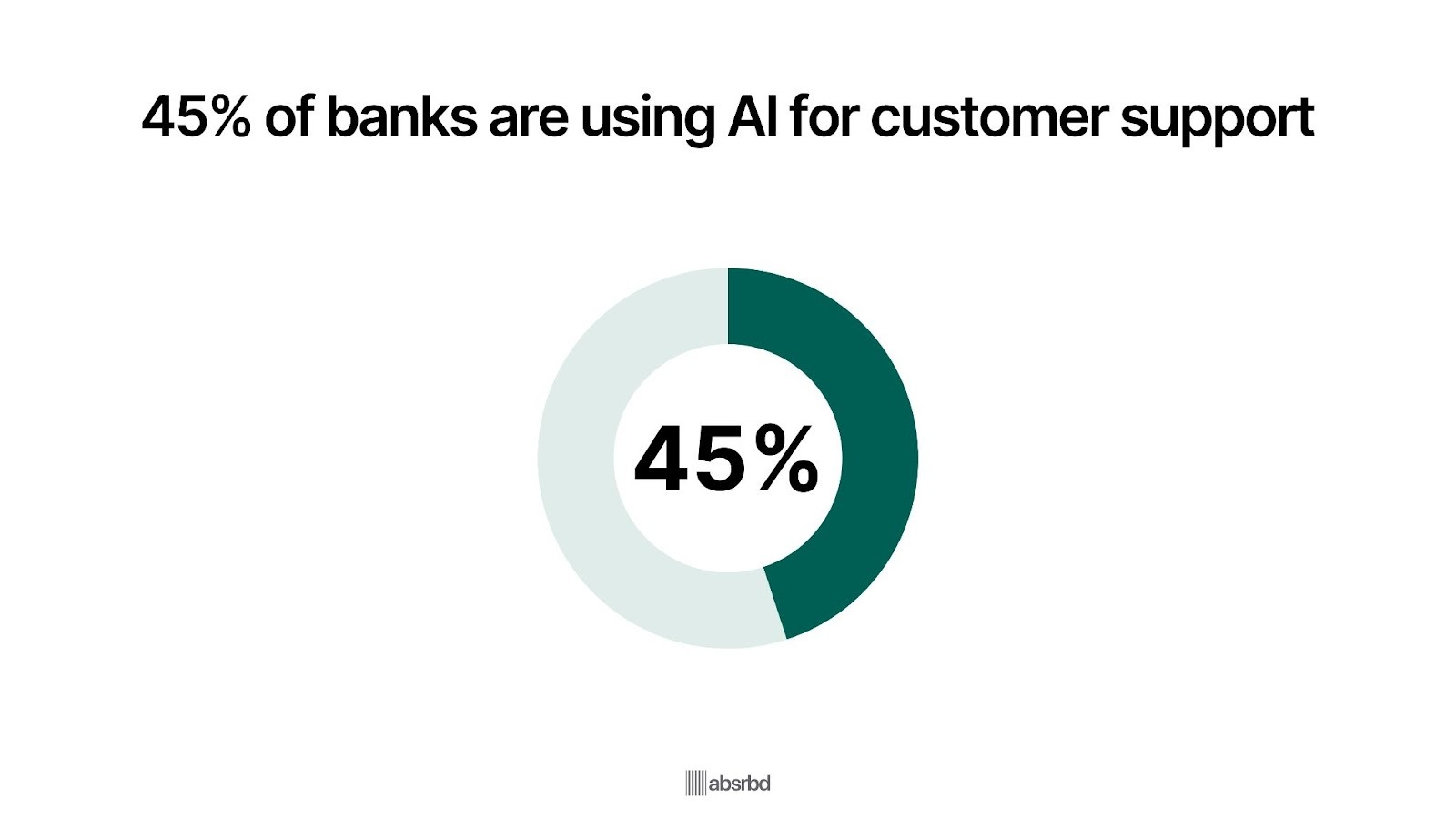
AI-powered chatbots are becoming a common feature in mobile banking apps, with 45% of banks utilizing them for customer support.
These chatbots can answer questions, handle requests, and provide personalized financial recommendations.
This trend is crucial as it enhances customer service efficiency and reduces bank operational costs.
Chatbots can handle many inquiries, allowing human agents to focus on more complex issues.
For instance, Bank of America's chatbot, Erica, has engaged in over 1.5 billion interactions (Bank of America), providing users with quick answers and improving overall customer satisfaction.
50% of Users Prefer Contactless Payments (Emarketer)
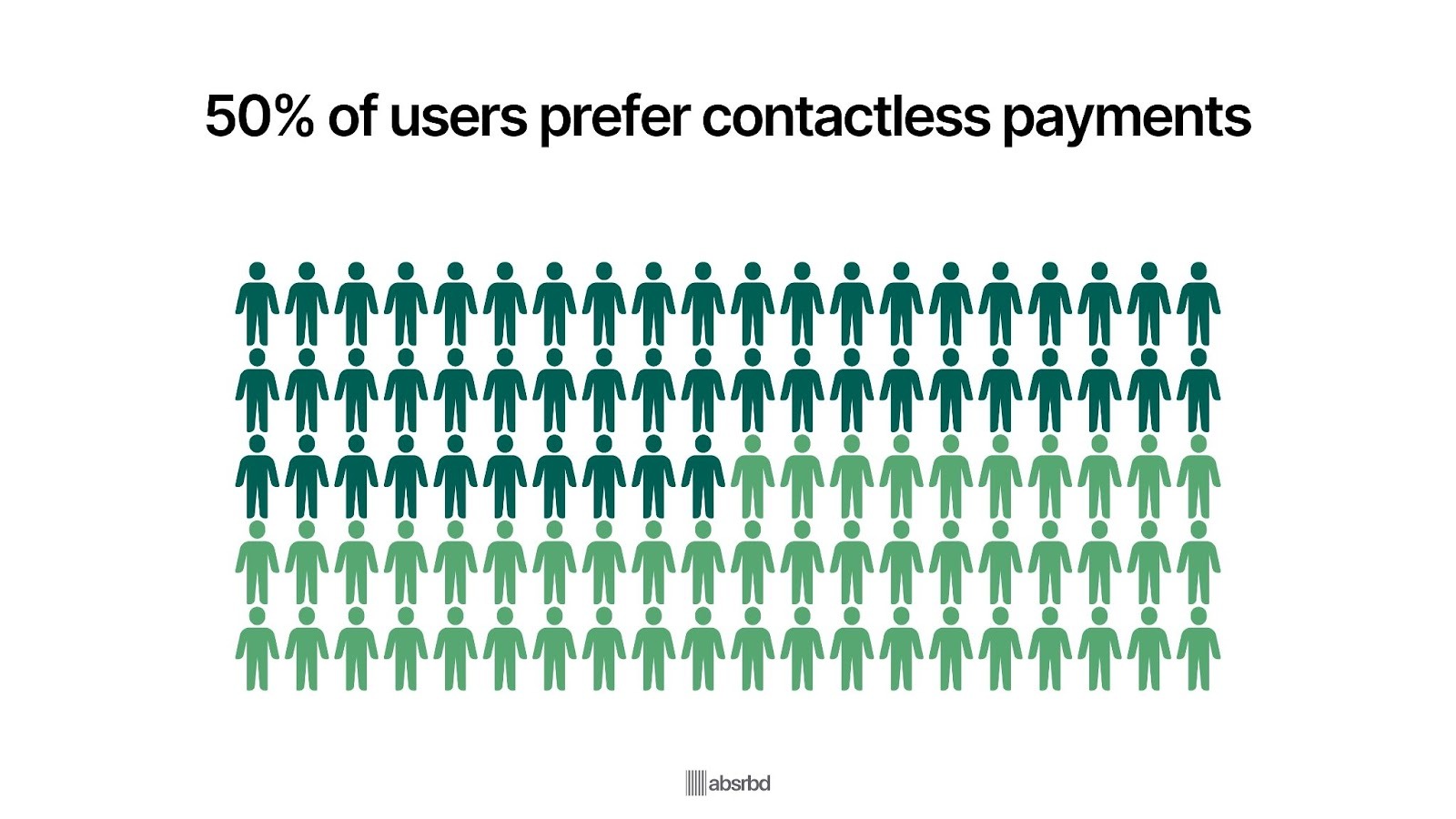
Integrating mobile wallets and payment systems into banking apps is on the rise, with 50% of users prefer contactless payment options.
This trend reflects the demand for seamless payment experiences and the convenience of using mobile devices for transactions.
This trend is crucial as it aligns with the growing preference for cashless transactions, particularly among younger consumers.
Mobile wallet integration allows users to make payments quickly and securely.
For example, many banks enable users to link their accounts to popular mobile wallets like Apple Pay and Google Pay, facilitating easy and secure transactions.
60% of Banks Exploring Blockchain Solutions (Deloitte)
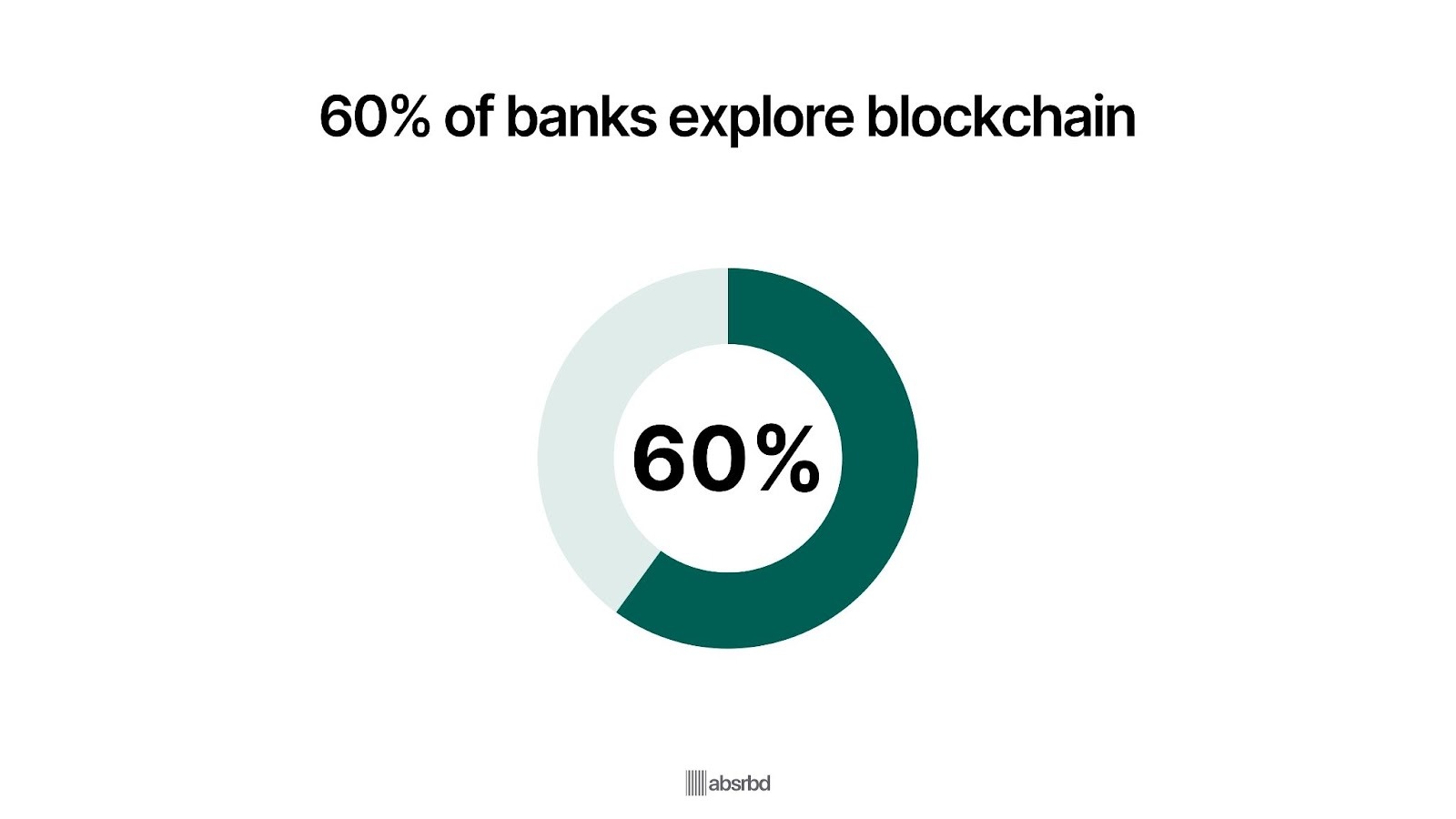
Blockchain technology is gaining traction in mobile banking, with 60% of banks exploring its potential applications.
This technology offers enhanced security and transparency for transactions, making it an attractive option for financial institutions.
This trend addresses the growing need for secure and efficient transaction methods.
Blockchain can reduce fraud and improve the overall integrity of financial transactions.
For example, several banks are piloting blockchain-based solutions for cross-border payments to streamline processes and reduce costs associated with traditional banking methods.
Key Challenges Facing the Mobile Banking Sector
The mobile banking industry faces several key challenges that could impact its growth and user adoption. Here are the major challenges:
Mobile Malware Grew 118% From Q3 to Q4 2020 (Macfee)
Cybercriminals are constantly developing new methods to exploit vulnerabilities in mobile banking applications.
A report by MACFEE found that mobile malware grew 118% from Q3 to Q4 2020, with common attacks including malicious apps, email/text phishing, and spoofed networks.
This trend is important because it directly risks user data and financial security. Banks that cannot ensure robust security measures risk losing customer trust and potentially facing financial losses.
For example, phishing attacks and malware designed to steal sensitive information are common threats that can compromise user accounts, leading to financial repercussions for consumers and banks.
Customization Challenges as 71% of Users Want Personalized Experiences (Persuasion)
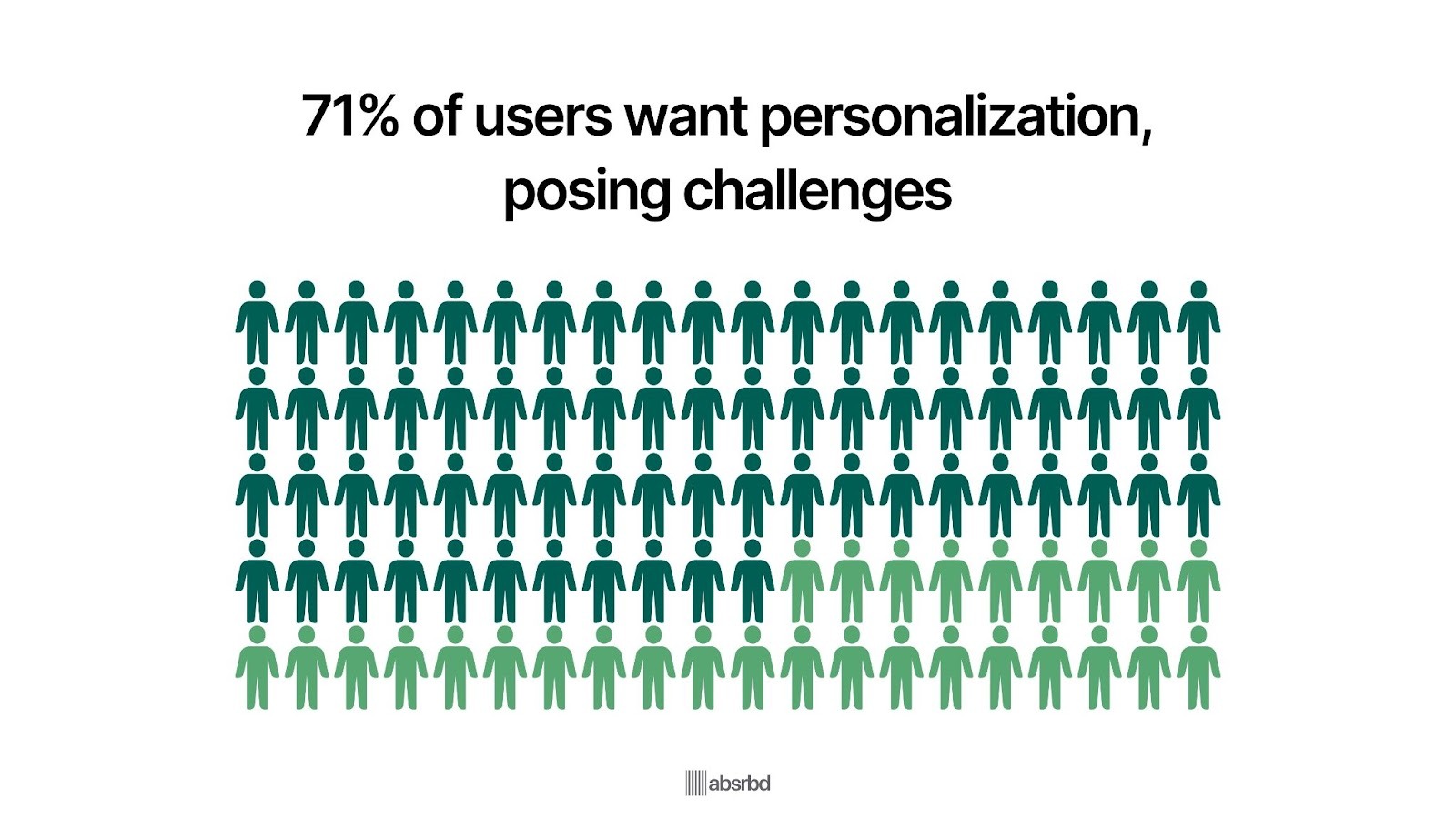
Despite the demand for personalized banking experiences, many mobile banking applications struggle to meet individual user needs.
An outstanding 71% of users express a desire for customized features, yet many apps offer limited personalization options. (Persuasion)
This challenge is crucial as it affects user satisfaction and engagement. Banks needing tailored experiences may see higher churn rates as customers seek alternatives that better cater to their preferences.
For instance, users often want to customize notifications, transaction formats, and language settings, but many existing apps need to offer these options, leading to frustration and disengagement.
70% of Users Frustrated with Navigation (Copper Digital)
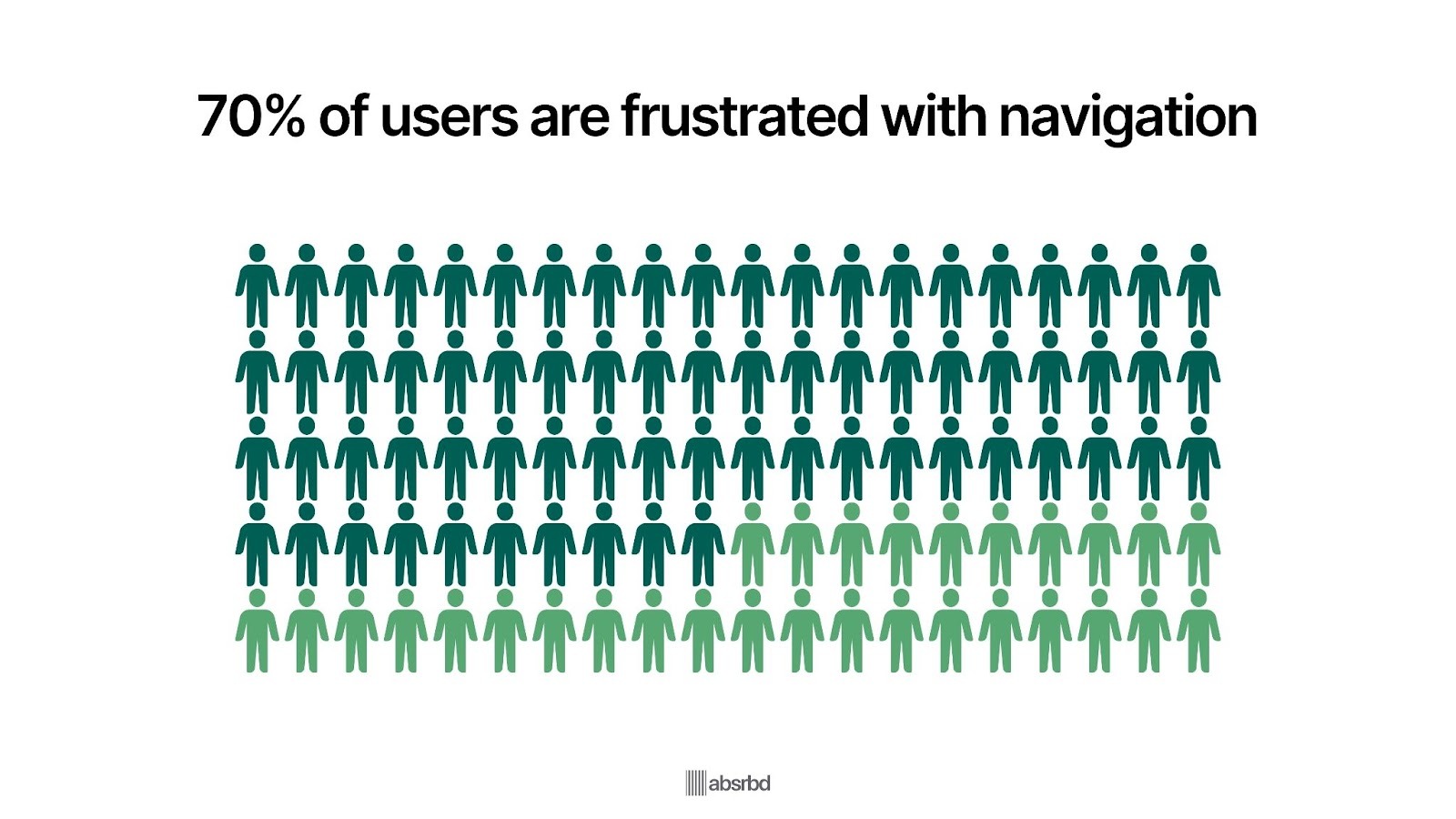
Creating intuitive and user-friendly interfaces is a persistent challenge, with 70% of users expressing frustration with navigation in mobile banking apps. (Copper Digital)
Poor UX design can hinder users from completing transactions efficiently.
This challenge is notable because a negative user experience can decrease usage and increase abandonment rates.
Banks must prioritize UX design to ensure their apps are accessible and easy to navigate.
For example, complex menus and unclear instructions can lead to user frustration, which can cause customers to seek out more user-friendly alternatives.
80% of organizations have been victims of payment fraud attacks
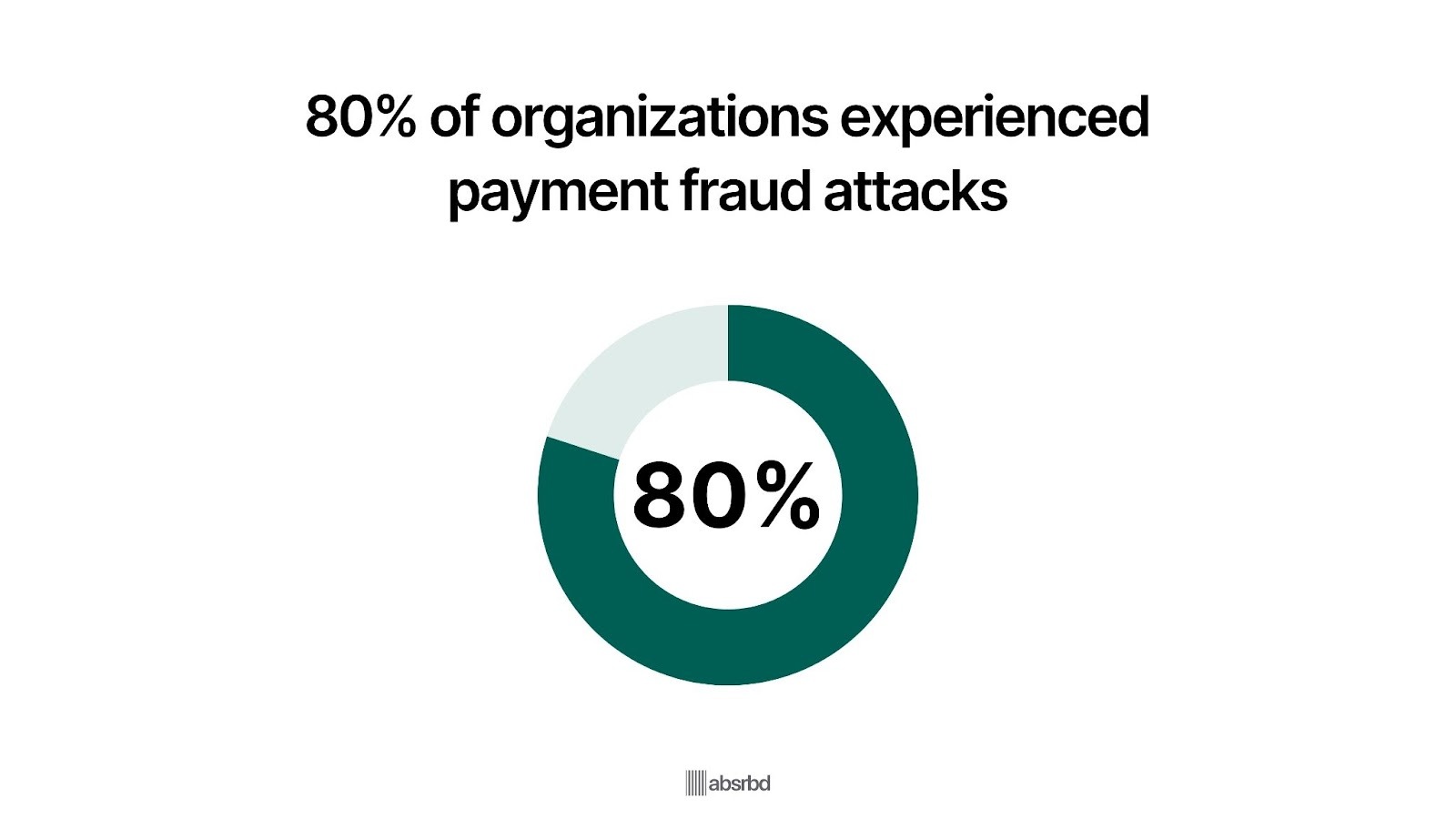
According to the American Banking Association, over 80 percent of organizations are victims of payment fraud attacks.
As mobile transactions increase, so do opportunities for fraudsters to exploit vulnerabilities.
This challenge is crucial as it directly impacts customer trust and the overall reputation of banking institutions.
Banks must implement robust fraud detection and prevention measures to protect their users.
For instance, multi-factor authentication can help mitigate fraud risks, but many users still report feeling insecure about their financial data, leading to hesitance in using mobile banking services.
92% of American Consumers Expressed Worry About Their Digital Financial Information's Safety. (Termly)
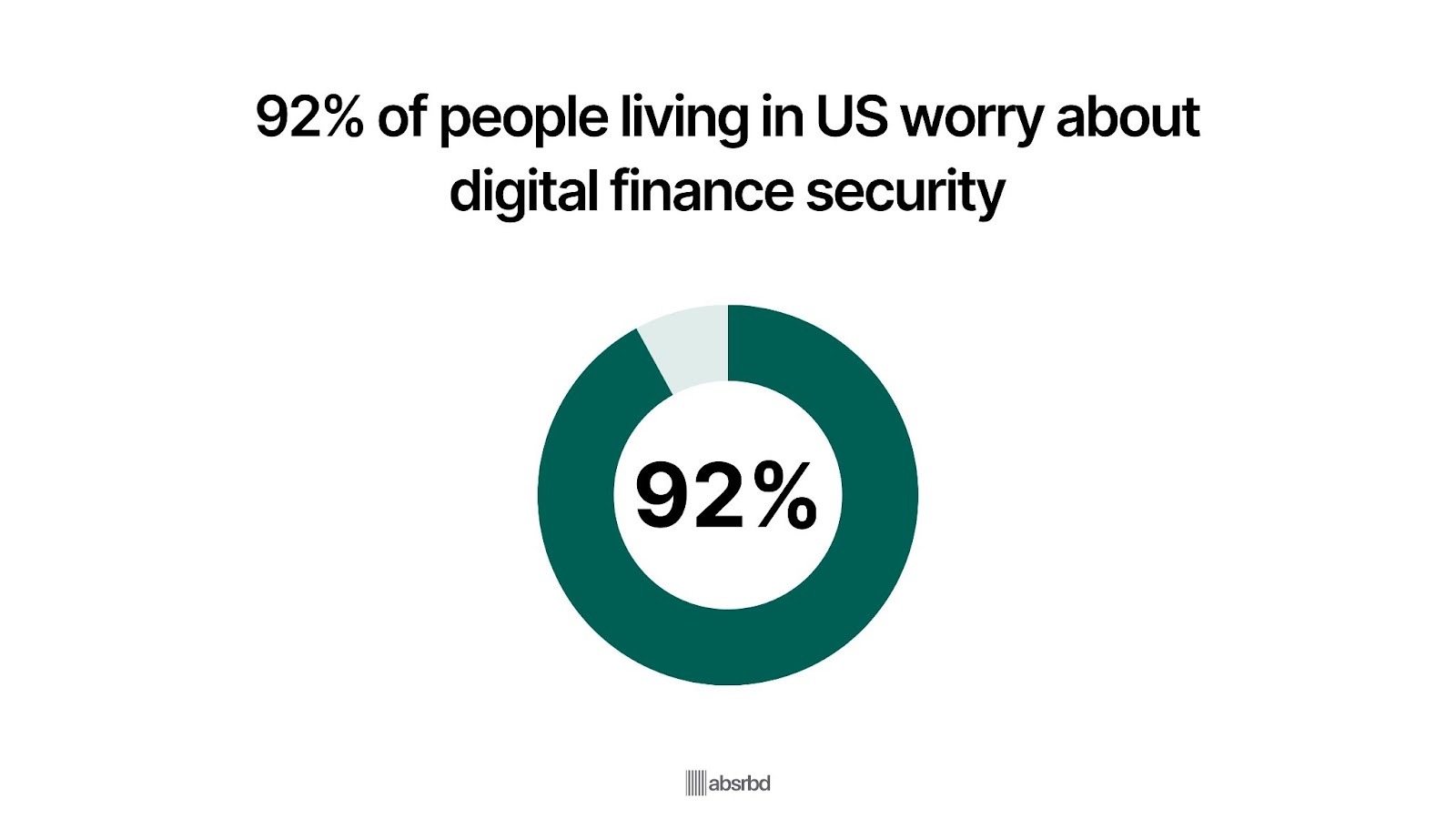
As mobile banking becomes increasingly popular, cybersecurity has emerged as a critical concern, with 92% of US consumers expressing worries about the security of their financial data. (Termly)
Banks are responding by implementing advanced security measures, including multi-factor authentication and biometric verification, to protect user information. This trend is important because it addresses the growing threat of cybercrime and builds consumer trust in mobile banking platforms.
Enhanced security features safeguard transactions and reassure users that their sensitive information is protected, essential for encouraging wider adoption of mobile banking services. For instance, many banks are utilizing biometric authentication methods, such as facial recognition and fingerprint scanning, which are harder for cybercriminals to bypass than traditional passwords.
Emerging Opportunities in Mobile Banking
Technological advancements, changing consumer preferences, and the changing financial industry drive are emerging opportunities in mobile banking. Here are some of the key opportunities:
Integration of Artificial Intelligence (AI) and Machine Learning
Adopting AI and machine learning in mobile banking creates opportunities for enhanced customer service and personalized experiences.
Banks can utilize AI to analyze customer data and predict behaviors, allowing for tailored financial advice and product offerings.
This trend is notable because it enhances user engagement and satisfaction by providing relevant services.
For example, AI-driven chatbots can offer 24/7 customer support, addressing queries and issues in real-time and improving the overall customer experience.
Seamless Integration of Banking Services
Embedded finance refers to integrating banking and financial services directly into non-financial apps and platforms, providing users with a seamless experience. This trend allows businesses to offer financial products without requiring users to leave their existing applications.
This opportunity is important because it enhances user convenience and fosters customer loyalty. For example, e-commerce platforms can integrate payment solutions, enabling users to complete transactions without leaving the shopping experience.
All-in-One Solutions for Consumers
The development of super apps, which aggregate various financial and lifestyle services into a single platform, is rising. These all-in-one mobile applications create a one-stop shop for consumers, combining banking, payments, shopping, and more.
This trend is important as it simplifies the user experience and encourages increased engagement with the app. For instance, apps like WeChat and Grab have successfully integrated multiple services, leading to higher user retention and satisfaction.
Digital-Only Challenger Banks
The rise of neobanks, or digital-only challenger banks, leverages mobile-first experiences and innovative features to disrupt traditional banking.
These banks focus on providing streamlined services without the overhead of physical branches. This opportunity is remarkable as neobanks cater to tech-savvy consumers who prioritize convenience and low fees.
For example, banks like Chime and Revolut have gained popularity by offering user-friendly interfaces and unique financial products that appeal to younger demographics.
Frictionless Transactions
The growing adoption of contactless payments through mobile wallets, digital cards, and tap-to-pay technologies transforms consumers' transacts. This trend enables frictionless, secure in-person transactions that enhance the overall payment experience.
This opportunity is crucial as it aligns with the increasing consumer preference for cashless transactions. For instance, the widespread use of Apple Pay and Google Pay demonstrates the demand for quick and convenient payment methods.
Artificial Intelligence Enhancing User Experience
Integrating artificial intelligence (AI) in mobile banking creates opportunities for improved customer interaction.
AI-powered chatbots, personalized financial insights, and predictive analytics can enhance the mobile banking experience by providing tailored services. This trend allows banks to anticipate customer needs and offer proactive solutions.
For example, AI-driven tools can help users manage their finances more effectively by providing budgeting tips based on spending patterns.
Open Banking Facilitating Innovation
The emergence of open banking frameworks enables secure data sharing between banks and third-party providers, fostering the development of new financial products and services. This trend encourages competition and innovation within the banking sector.
This opportunity is important as it allows consumers to access a wider range of financial services tailored to their needs.
For instance, open banking APIs enable fintech companies to create innovative solutions that enhance user experience and financial management.
Biometrics Strengthening Security
Integrating advanced biometric authentication methods like fingerprint, facial, or voice recognition improves mobile banking security.
These technologies enhance user authentication processes and protect sensitive information.
This trend is important as it addresses consumer concerns about data security.
For example, banks implementing biometric security measures can build trust with users, encouraging them to adopt mobile banking services confidently.
Financial Education Empowering Users
Banks have a growing opportunity to provide financial education and literacy resources through their mobile apps.
As consumers seek guidance in managing their finances, banks can offer tools and resources to empower users.
This trend is crucial as it helps users make informed financial decisions, fostering long-term relationships with banks.
For instance, banks that provide educational content, budgeting tools, and financial planning resources can enhance customer engagement and loyalty.
Impact on Stakeholders
The major trends in mobile banking have a great impact on various stakeholder groups:
Consumers:
- Increased convenience and accessibility to banking services anytime, anywhere
- Enhanced security through biometric authentication and real-time fraud monitoring
- Personalized financial insights and money management tools
- Seamless integration of banking with daily life through super apps and embedded finance
Businesses:
- Ability to offer digital-first banking solutions and facilitate contactless payments
- Improved cash flow management and invoicing through mobile banking features
- Access to innovative financial products and services tailored to business needs
- Opportunities to partner with fintech providers and leverage open banking APIs
Investors:
- Growing investment opportunities in mobile banking startups and fintech companies
- Potential for higher returns as mobile banking drives financial inclusion and disrupts traditional banking
- The rapidly changing mobile banking sector must closely monitor cybersecurity risks and regulatory changes.
- Increased interest in companies leveraging emerging technologies like AI and biometrics to enhance mobile banking experiences
Regulators:
- Challenges in ensuring data privacy, consumer protection, and financial stability in the mobile banking ecosystem
- The necessity to develop flexible regulatory frameworks that encourage innovation while mitigating risks
- Importance of collaborating with industry players to establish robust cybersecurity standards and guidelines
Conclusion
Mobile banking has rapidly evolved from a niche service to a mainstream financial tool. Integrating technologies like artificial intelligence and the rise of super-apps is driving its future.
Data suggests that mobile banking will soon become the primary financial interface for consumers, crucial for financial inclusion and the digital economy.
This growth highlights the need for strong cybersecurity and regulatory frameworks. The future of mobile banking depends on those who embrace innovation, prioritize user experience, and balance technological advancement with risk management, positioning the industry as a key player in global finance.
Frequently Asked Questions
What are the Barriers to Mobile Banking?
Some of the key barriers and challenges faced in the adoption and growth of mobile banking include:
- Security and privacy concerns: Consumers remain wary of the security of their financial data and transactions when using mobile banking apps, which presents a notable barrier to wider adoption.
- Regulatory uncertainty: regulatory frameworks and compliance requirements around mobile banking can create uncertainty and complexity for financial institutions.
- Technological limitations: Network reliability, device compatibility, and battery life can hinder the seamless user experience necessary for widespread mobile banking adoption.
- Digital divide: Lack of access to smartphones and high-speed internet, particularly in underserved or rural areas, can exclude certain demographics from the benefits of mobile banking.
- User trust and habit: Many consumers remain hesitant to fully embrace mobile banking, preferring traditional in-person or desktop-based banking experiences they are more familiar with and comfortable with.
- Legacy banking infrastructure: Integrating mobile banking capabilities with traditional financial institutions' existing core banking systems can be complex and costly.
- Cybersecurity threats: The rise of mobile-focused cyberattacks, such as malware and phishing scams, can undermine consumer confidence and hinder mobile banking adoption.
What Percentage of Americans Use Mobile Banking?
According to the latest data, a good percentage of Americans are using mobile banking:
- 76% of adults in the United States use mobile banking apps. American Banking Association
- In 2024, the share of bank account holders who processed banking matters on their smartphone or tablet was 63%, up from 58% in 2019. (Statista)
Younger generations are more likely to use mobile banking services. In 2021, 74% of individuals aged 15 to 24 reported using mobile banking in the past 12 months, compared to only 15% of those aged 65 or older. (Statista)
